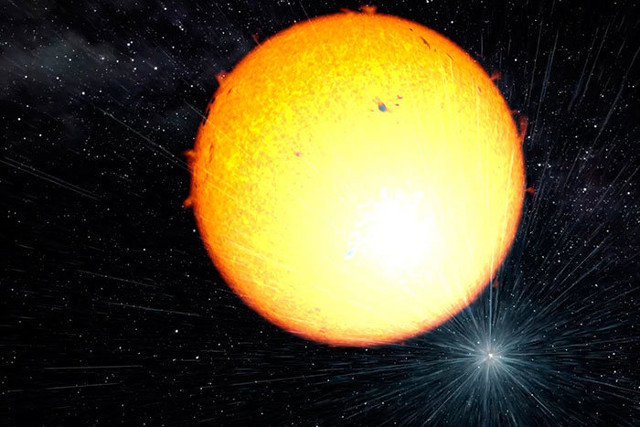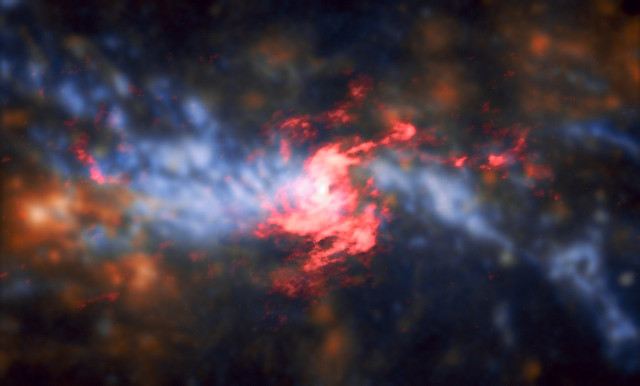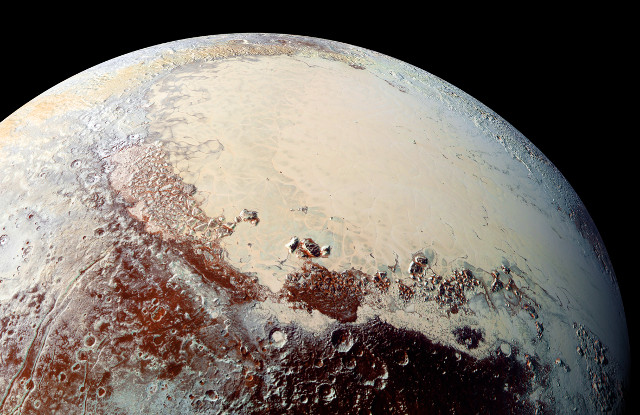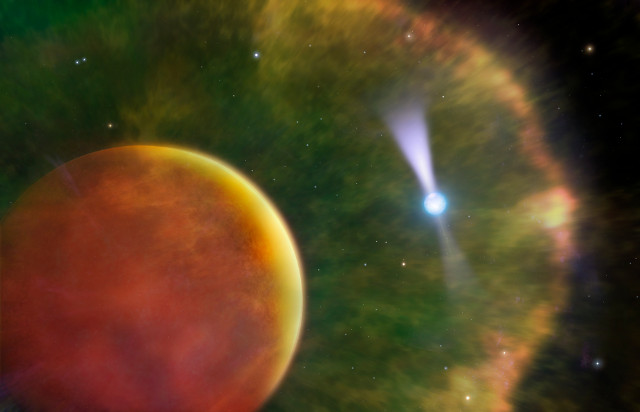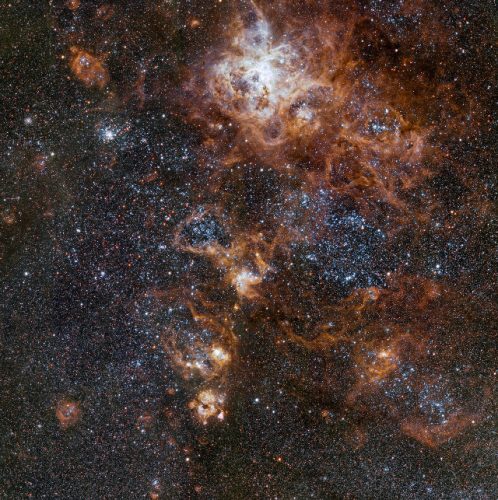
A crowded neighborhood for the Tarantula Nebula
An image published by ESO shows the Tarantula Nebula along with the neighboring areas in their details. A team of astronomers used the VLT Survey Telescope (VST) at ESO’s Paranal Observatory, in Chile, to capture unseen details of star clusters, bright gas clouds and supernova remnants scattered around. It’s the sharpest image ever obtained of that region of the Large Magellanic Cloud, one of the Milky Way’s satellite dwarf galaxies.


